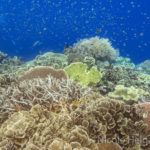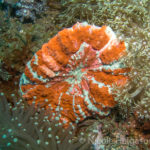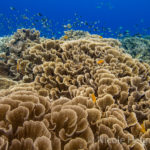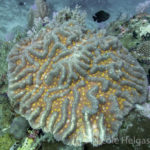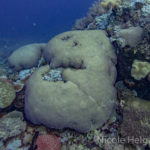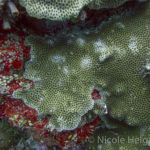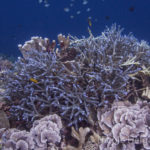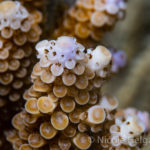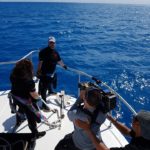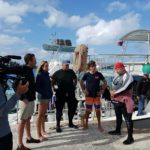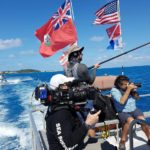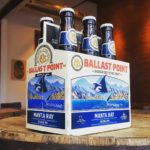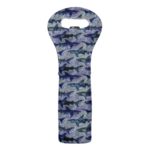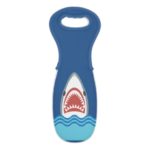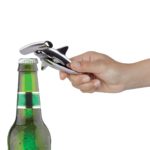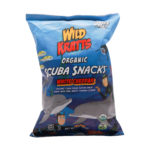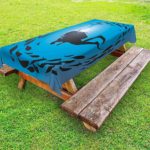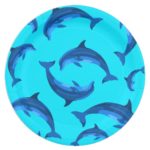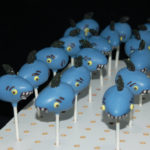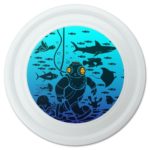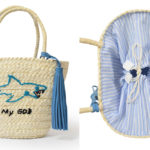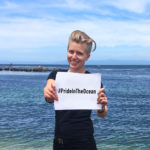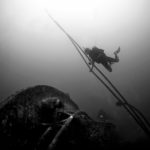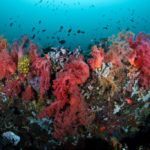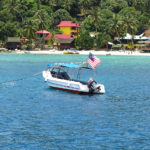If you’re into wreck diving, the name Chuuk Lagoon should get your heart racing — and rightly so. It’s a graveyard of Japanese ships that went down during the Allies’ Operation Hailstone during WWII. There are around 60 wrecks in an area of just a few miles, all lying within a calm atoll devoid of ocean currents. Many of the wrecks lie within recreational depths and they are all great dives, but here are our picks for the five top recreational wreck dives in Chuuk Lagoon.
Heian Maru
“Maru,” a common appellation on the wrecks in Chuuk, means “merchant ship” in Japanese. The Heian Maru, a submarine tender, is the largest ship in the lagoon at 511 feet (155 m), which means it will take numerous dives just to get oriented. Originally a cargo passenger vessel, the Japanese requisitioned the ship in 1941 and put to work as a submarine tender, covering Rabaul, Kwajalein, Chuuk, and the Solomon Islands. On the morning of February 17th, 1944, as Operation Hailstone began, U.S. dive bombers attacked the ship. A from a 1,000-pound bomb damaged the propeller, and the next day, a bomb hit to the engine room on the port side started large fires. Finally, a torpedo hit on its port side caused the ship to list and it sank with the death of 18 crew members.
The wreck lies in 115 feet (35 m) of water on its port side, but the coral-covered starboard hull is very shallow at 33 feet (10 m). As you move along the top of the wreck, the glass in the portholes on the promenade deck shows bubbling from the intense fires. On the promenade deck, look for a pile of 50-foot-long (15 m) periscopes. In hold No. 2, you can see 10 long-lance torpedoes and in hold No. 3 there are submarine batteries and an artillery piece. Holds No. 4 and 5 offer a glimpse into the downtime of Japanese servicemen as they’re both full of beer bottles. You’ll find some timber, oxygen cylinders and gas masks as well. If you are wreck-certified, the engine room is an amazing sight of gauges, valves, cylinders, and pipework, which can be a little confusing due to the wreck’s positioning. You can also see a human skull here.
Perhaps the most striking feature of this wreck, however, is the name, written on the bow in English and Kanji in raised letters. At the stern the two huge propellers and rudder are also quite a sight.
Sankisan Maru
Two wrecks in the lagoon best showcase the violence that rained down during Operation Hailstone: the Aikoku Maru is one and the Sankisan is the other. Both ships were carrying significant amounts of ordnance at the time of the attacks. As fires took hold after the bombings, huge secondary explosions destroyed half of the ships. The front half of the Aikoku Maru was completely obliterated (along with 730 lives). On the Sankisan, the entire rear half of the ship is missing apart from the very stern, which lies in a crater away from the rest of the ship at 155 feet (45 m).
The rest of the Sankisan is a very easy dive. It was a passenger cargo vessel and sits on its keel. The deepest point of the dive takes place above the forward holds at around 60 feet (20m). In hold No. 1 you will find a large pile of mixed ordnance — small-arms ammunition and anti-aircraft shells. It was neatly stacked in wooden boxes, but the wood has long since rotted away. You can swim from hold No. 1 into hold No. 2, where you’ll find three radial aircraft engines, along with aircraft cowlings, exhausts and wheel assemblies. There are also remnants of 1.5-ton Isuzu trucks have degraded badly, but you can still make out the steering wheels, chassis, gearboxes and tires.
Fujikawa Maru
Perhaps the best-known wreck in Chuuk (along with the San Francisco Maru), the Fujikawa has it all — interesting cargo, amazing marine life, and an incredible engine room. The steering section at the stern is also a brief but interesting penetration dive.
When the attack began, the Fujikawa was busy unloading its cargo of disassembled aircraft. When a torpedo hit the ship just aft of amidships on the starboard side, it began to sink slowly, although the crew managed to abandon ship. It was still afloat on the next morning when dive bombers hit it with a 1,000-pound bomb on its port quarter. A further attack caused a large explosion, and it eventually sank, landing upright in 115 feet (35 m) of water, with the top of the bridge at 33 feet (10 m).
As with most wrecks in the lagoon, you can’t possibly see everything on one or even two dives. Hold No. 1 contains stacks of spare aircraft propeller blades, some aircraft engine cowlings, wing tanks, and some 55-gallon fuel drums. There are also some shells and AA casings. Hold No. 2 contains numerous aircraft parts, including wings, cockpits, and fuselages. The cockpit of a Mitsubishi Zero is clearly identifiable, and even still has the joystick. Other parts are from Jill bombers. It’s a jumbled mess, and over time it has become more difficult to make out exactly how many of each type of aircraft there are in there.
Of note in hold No. 3 is the extensive bomb damage, well worth a peek. The top of the superstructure has rotted and degraded to reveal baths in the officers’ accommodations, but much of the bridge is missing the telegraphs and other navigational equipment on many other wrecks in the lagoon.
The engine room is one of the best in Chuuk and houses the iconic and often photographed “R2D2” compressor. There is a machine shop and storage area on the first level and lower levels contain the engine machinery where you will see valves, gauges and electrical switches dotted all over. Although it’s easy to access the engine room, take care as you can easily kick up a lot of silt.
Kensho Maru
The Kensho Maru was very active during the war, making numerus supply voyages from Yokosuka in Japan to Chuuk, Rabaul, Saipan, Wake, Kwajalein and Taroa. Sixteen U.S. B-24 Liberator bombers heavily damaged the ship in a 1943 airstrike on Kwajalein, where it was temporarily repaired before being towed to Chuuk for more permanent repairs. On February 17 it was still under repair when Douglas Dauntless dive bombers attacked. A 1,000-pound bomb struck amidships, setting the ship on fire and killing six crewmembers. The ship remained afloat, however, and when it was attacked again the next day, the captain gave the order to abandon ship. Torpedo bombers sank it in 115 feet (35 m) of water, laying it to rest on the keel.
Because it was being repaired, there was no cargo on the ship. The main area of interest during a dive is the engine room. Entering through skylights at around 60 feet (18 m), you descend into a cavernous space. From here you still have direct access to the surface. To go any further requires descending down a flight of stairs into the main area where you’ll find the engines and generators. Although you should be wreck-certified and use a guideline, navigation is very easy. A rectangular grid of catwalks skirts around the machinery on two main levels, and there’s very little silt because the catwalks allow it to sink to the very bottom of the wreck.
Everywhere you look you can see valves, gauges, switches, even thermometers coming out of the pipework. In one corner is a machine shop with a vice and huge wrenches on the wall. Using of nitrox will give you the bottom time you need to have a good look around providing your air consumption is good. The bottom of the engine room is at around 100 feet (30 m).
Other highlights include officer accommodations below the bridge that contain baths, with pipes and taps still attached. Further aft is the galley, which has a stove, a mosaic-tiled floor, and a shelf containing crew uniforms. The bridge has rotted away, but just below you can see two radio stacks in the radio room.
Shinkoku Maru
At 503 feet long (152 m), the Shinkoku Maru is the second-largest wreck in the lagoon. Requisitioned as an auxiliary oiler in 1941, it refueled Japanese aircraft carriers during the attack on Pearl Harbor and was present at the Battle of Midway. It was attacked and torpedoed by U.S. submarines twice during supply trips to Chuuk, escaping with minor damage and quick repairs. The ship entered the lagoon for the last time on February 14, 1944 and its luck ran out shortly thereafter. On February 17, a bomb hit the vessel amidships although it remained afloat. The next day, a torpedo hit the Shinkoku on its port side at the stern. Water flooded into the engine room and it sank soon after. It lies upright in 130 feet (40 m) of water.
The most striking sensation when diving this wreck is just how long and wide it feels as you swim from one end to the other. A normal dive begins with a swim to the stern to see the torpedo hole on the port side. Along the way you will see various valves and pipes on the deck, reminding you that this was an oil tanker. The torpedo hole allows access to the engine room, which is a twisted mess of metal in some areas. It can be tight and disorienting as you enter lower levels, so good wreck training is a must. This is the deepest part of the dive, at around 100 feet (30 m). You can also enter the engine room via the skylights on the main deck. Descending here reveals a large space containing cylinder heads below a catwalk. Moving back along the ship toward the bow the highlight is the main superstructure, which has officers’ accommodation on the lower level.
A bathroom still contains a tiled bath, and next door are some urinals. In the main area on the port side is a surgeon’s table, which has numerous bottles, bowls and glass piping, as used in the medical bay. On top of the table is also a pile of human bones. Depth here is around 66 feet (20 m). On the top of the superstructure the bridge has largely rotted away, exposing the floors underneath. Here you will find numerous items left by divers, a medical box, and various bottles. Looking below you can see two engine telegraphs before you begin your ascent to the safety stop.
There are many more wrecks in the lagoon within range for recreational divers and it’s difficult to pick just five — the Rio de Janeiro Maru should really have been No. 6 on this list. If you’re planning a trip Chuuk, do some research on the specific wrecks you want to dive and talk to dive operators in advance to see if they can fulfil your wishes. Land operators have numerous launches, which means they can easily split up technical divers and those who want to dive the shallower wrecks. Liveaboards will try to please everyone who booked for that particular week, and you may have the choice of either skipping a deeper wreck or actually being allowed to dive one that is way beyond your limits (depending on the operator). Remember that this is a remote location, so make safety a priority. One thing is certain — once you’ve had a taste of the top recreational wreck dives in Chuuk Lagoon, you’ll be hungry for more.
The post Five Top Recreational Wreck Dives in Chuuk Lagoon appeared first on Scuba Diver Life.
from Scuba Diver Life https://ift.tt/2z7YqHp


